Since the opening of Universal Studios Florida in 1990, Sheinberg and MCA had been racing to become more than a day trip from Walt Disney World’s backyard. Even then, in the early ‘90s, their plans for Orlando expanded beyond the Studios park and to a whole new second gate that they hoped would hit Disney where it hurt: Cartoon World. Assembling Jay Ward comics, Dr. Seuss, Looney Tunes, and DC Comics into one theme park, Cartoon World would assemble a world-class collection of timeless animated intellectual properties that would give Disney a run for its money.

Of course, Universal didn’t specifically own any of those brands. Instead, they’d need to license them from their parent companies.
As we know, Warner Bros. ended up axing its agreement with MCA, causing Looney Tunes and DC Comics to be stricken from the planned park… and instead opening the door for Universal’s intriguing ownership of Marvel’s Avengers in Orlando in 1994.
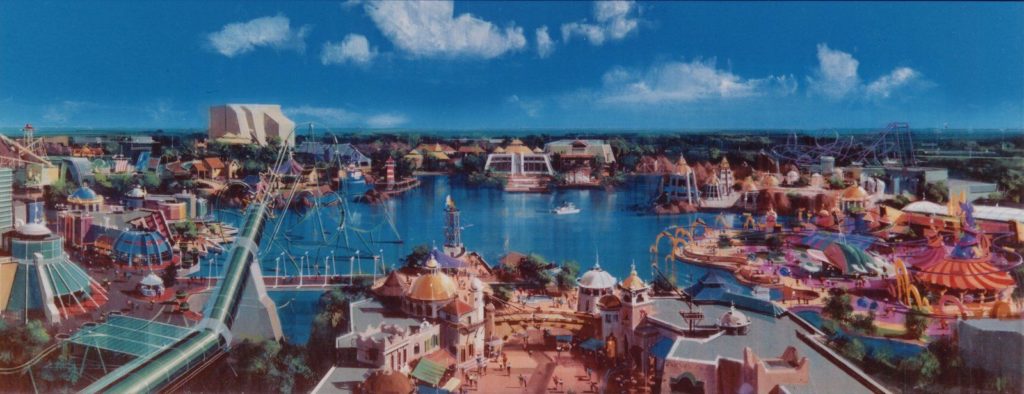
But at that same moment, the roaring success of Jurassic Park in theaters (and the in-progress build of The Ride in Hollywood) suggested that Universal might do well to consider making Jurassic Park a centerpiece of its new park, expanding from a single, standalone ride into a full land recreating the Costa Rican island. Other lands developed around the centerpiece Jurassic Park.
Naturally, that meant that Universal’s second gate was no longer a “Cartoon World” at all.
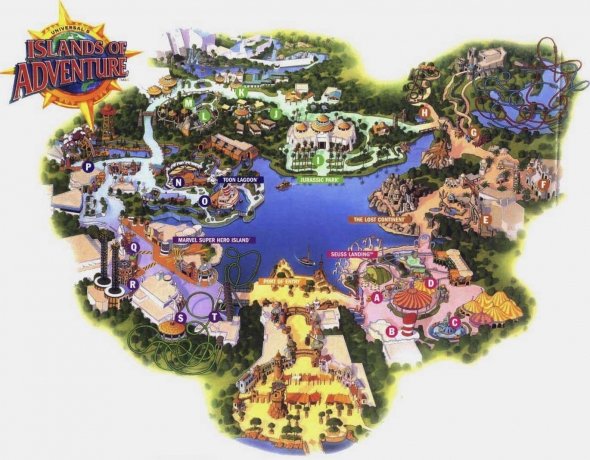
So when Jurassic Park: The Ride opened in 1996, the blueprints were sent back East to coincide with the groundbreaking of a very different second gate: one built around literature, myths, legends, novels, picture books, and comics. Universal’s Islands of Adventure would feature immersive, Disney-style “islands” situated around a central lagoon. And as guests gazed across this great sea from the park’s Port of Entry, they’d see Jurassic Park itself.
Isla Aventura
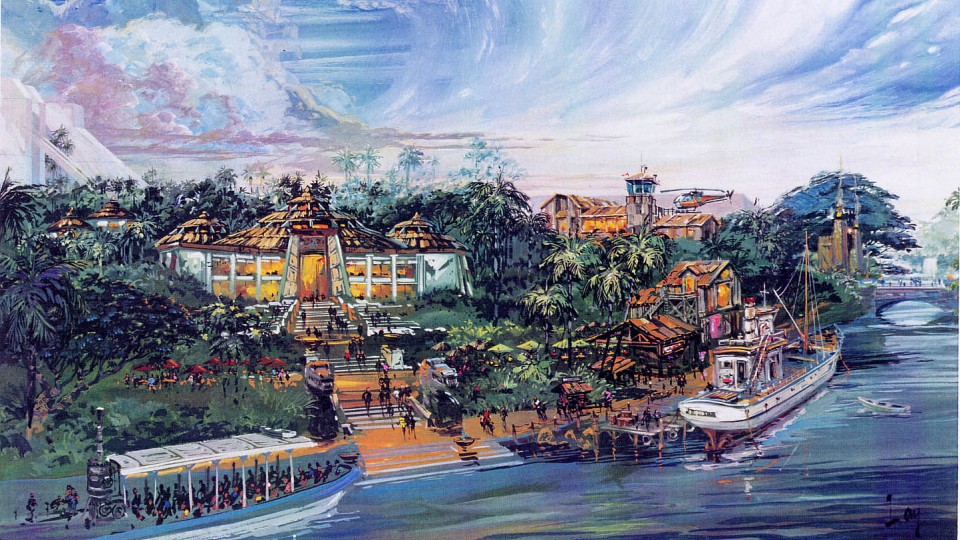
Whereas Universal Studios Hollywood invites us behind-the-scenes of our favorite films, Islands of Adventure is about being transported to new worlds. And there’s a sort of meta, in-universe brilliance to that in the case of Jurassic Park. After all, the Jurassic Park “land” is essentially inviting us into the theme park version of… a theme park! There’s no need for a convoluted story to explain away our role on rides, or the existence of restaurants or midway games; we’re stepping into the “real” theme park built by John Hammond!

As a result, we can tour the Jurassic Park Discovery Center, a picturesque mini-museum where “real” Jurassic Park scientists can introduce us to freshly-hatched dinosaurs; we can tour the Triceratops Encounter, a really-for-real zoological exhibit inviting us into the island’s veterinary clinic for a meet-and-greet with a living (but sedated) triceratops. There’s even Camp Jurassic, a purpose-built family discovery area of ranger towers, bridges, and dig pits built around the island’s natural amber-encrusted caves with the Pteranodon Flyers roller coaster gliding around its perimeter – built here by Hammond and company for family amusement!
And here, as part of the “living” theme park, resides one spectacular way to tour its habitat: the Jurassic Park River Adventure. (Note the name change, firmly establishing this as just one attraction in the “real” park. This also happens to be the name initially chosen by the Goddard Group for Hollywood’s original version.)
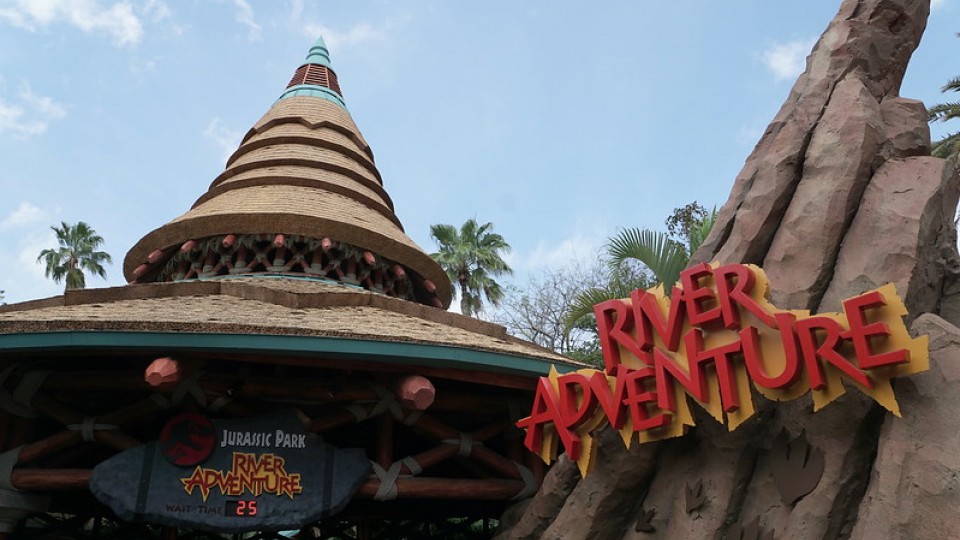
Jurassic Park River Adventure (later copied to Universal Studios Japan in a mirror-image “flipped” version as part of a similarly-scaled Jurassic Park land) opened alongside Islands of Adventure in May, 1999. The Floridian version of the ride does differ from its original Hollywood counterpart in a number of ways aside from its in-universe narrative. Unfortunately, most were clearly budget-related:
- The living trellis tunnel was removed from the ride’s initial approach to the Jurassic Park gates (perhaps a fair trade off given Islands of Adventure’s authentically-dense jungle) and those iconic gates are – more often than not – simply stuck “open”;
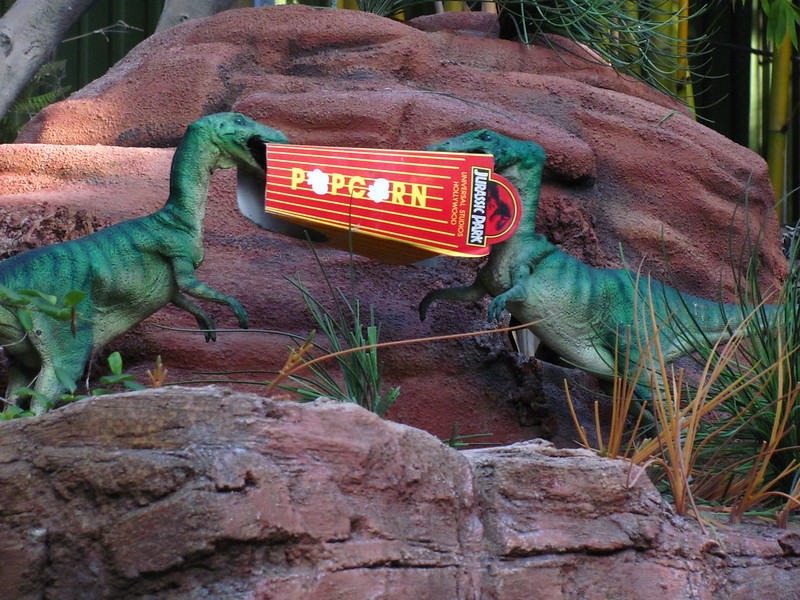
- The ride is encased in more lush landscaping and more elaborate scenic design elements (no doubt owing to its more immersive setting and its more immense scale);
- The Ultrasaur Lagoon features a single, towering Ultrasaur without its young baby;
- The “falling Jeep” effect that proved perpetually difficult to operate in Hollywood was wisely replaced with a classic dark ride gag: a crate (seemingly with a live Velociraptor transported within) suspended over the waterway, which loudly falls as guests pass under;
- Once inside, the ride’s longer lift (given its taller drop) is populated by additional (and somehwat ineffective) vignettes of velociraptors attacking, and the spitting Dilophosaurs are relocated to the lift’s apex. (they’re outdoors in Hollywood)
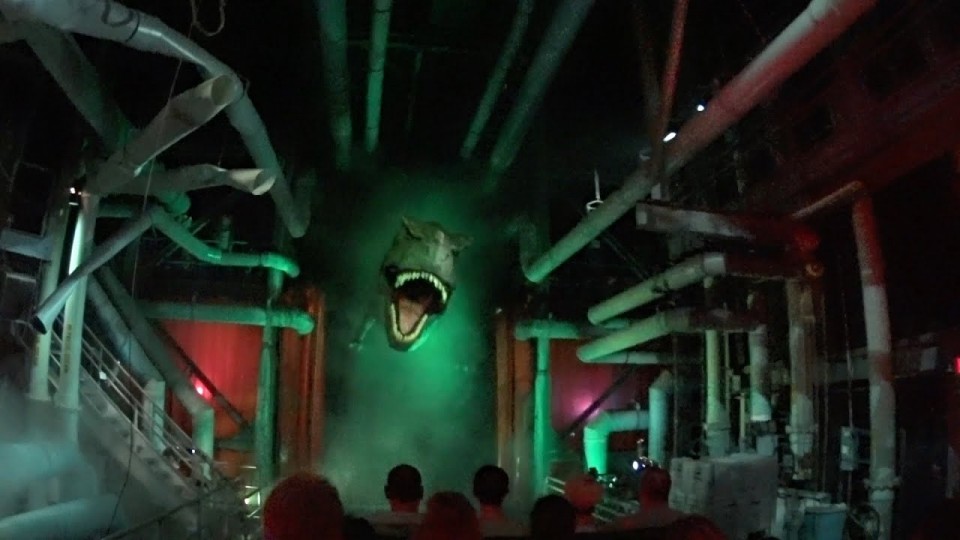
- The initial T. rex attack from above is entirely absent, theoretically “replaced” by a garage door where a projected claw mark appears, indicating the dinosaur is on the move just on the other side of an industrial wall;
- The ride’s indoor portion removes the conceit of the “Environmental Systems Building” and the tense countdown to the termination of life support systems, leaving a somewhat awkward silence as guests drift toward the inevitable drop (without any narration, countdown, or even music);
- The T. rex is visible upon approach rather than being concealed behind a waterfall and “swinging” out toward riders.
Take a look at this on-ride point-of-view video of Jurassic Park River Adventure at Universal’s Islands of Adventure to spot all the changes that came with the ride as it was exported to Florida in 1999:
There’s no doubt that Orlando’s Jurassic Park River Adventure is a pretty impressive attraction in its own right, even if some of the ride’s nuance was “lost in translation.” Simple “no-one’ll-notice” edits like the forgotten vine tunnel, lost baby Ultrasaur, missing narration, no overhead T. rex attack, and the excised finale waterfall and “swinging” T. rex figure amount to a ride that’s inarguably something different, and pretty agreeably something less than the Hollywood original.
So even though the Jurassic Park River Adventure was billed as (and successfully performed as) one of Islands of Adventure’s anchor attractions in 1999, you’d be right to assume that two decades later, it’s probably in need of a good old fashioned reimagining.
More than just an annual, cursory refresh, it would’ve been fantastic to see both Jurassic Park: The Ride in Hollywood and the Jurassic Park River Adventure in Orlando reimagined with sizable budgets.
Of course, that’s exactly what happened to one of them…
Something has survived
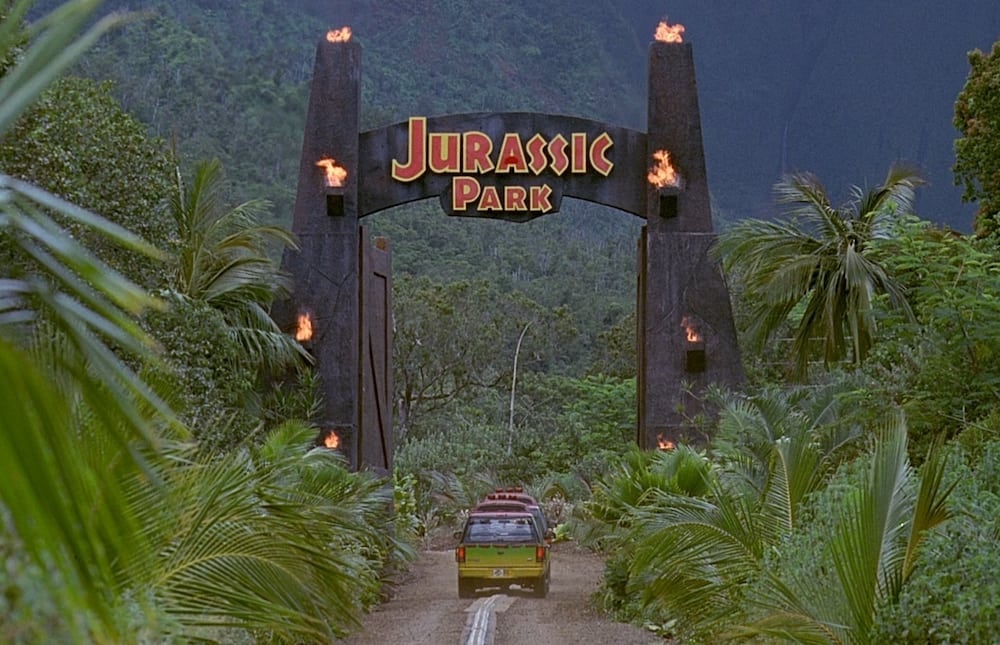
Jurassic Park debuted in 1993.
Jurassic Park: The Ride opened at Universal Studios Hollywood in 1996.
And by 1999, Jurassic Park had proven itself. It had trascended past mere “blockbuster” and into the cultural zeitgeist, earning not just a “: The Ride” but an immersive, living land among the literary and evergreen lineup of Islands of Adventure.
Even if the concept and brand of Jurassic Park had been elevated into timelessness, its inevitable sequels weren’t. 1997’s The Lost World and 2001’s Jurassic Park III each came with declining reviews and revenue. Maybe the magic of Jurassic Park had been a once-in-a-lifetime, blink-and-you’ll-miss-it moment; an awe-inspiring, gotta-see-it demonstration of early CGI doing what had – until that very moment – been impossible. Worse, maybe Jurassic Park would become a never-ending franchise of decreasing quality entries and tie-ins until fading from public consciousness as a tarnished brand…
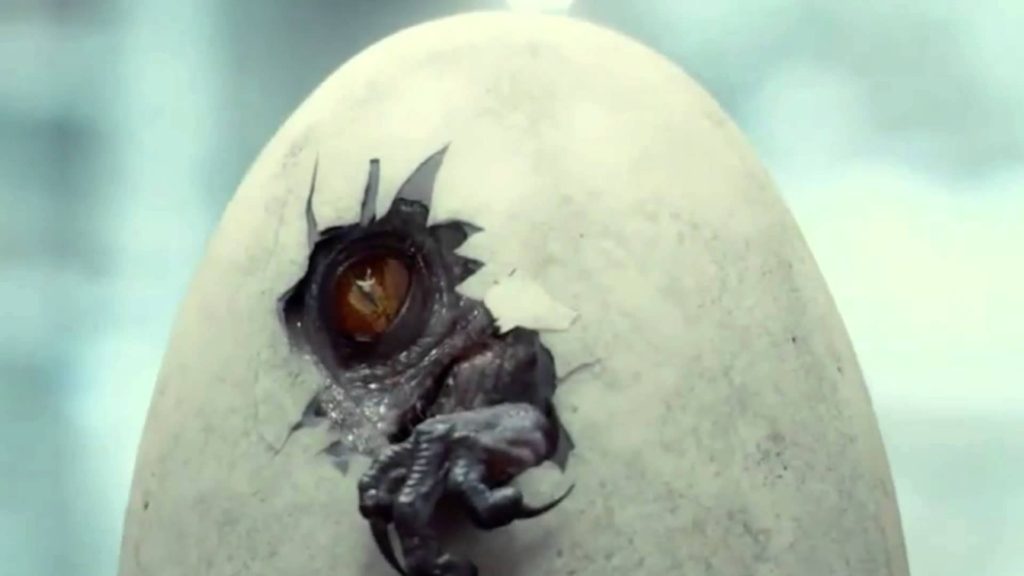
But it turns out that something survived…


